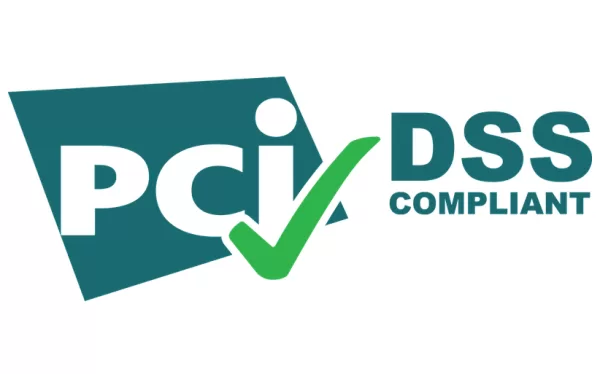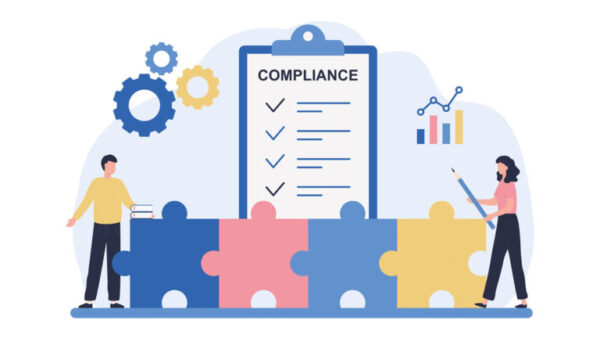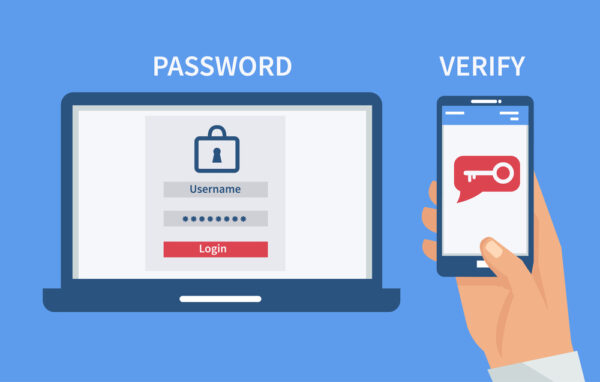Table of Contents
PCI compliance for ecommerce must be a familiar term if you are in the online business space. PCI DSS (Payment Card Industry Data Security Standard) is a set of security standards designed to ensure that all companies that accept, process, store, or transmit credit card information maintain a secure environment. In other words, if your website accepts payments from customers using credit cards, you need to be PCI compliant.

Becoming PCI compliant can be a daunting task, but it’s essential to protect your business and your customers’ sensitive information. Non-compliance can result in hefty fines, legal action, and reputational damage. In this article, we will provide an overview of PCI compliance for ecommerce websites, including what it is, why it’s important, and how to achieve compliance. By the end of this article, you’ll have a better understanding of what you need to do to ensure your website is secure and compliant with industry standards.
What is PCI Compliance for Ecommerce
Payment Card Industry Data Security Standard (PCI DSS) is a set of security standards developed to ensure that all companies that accept, process, store or transmit credit card information maintain a secure environment. PCI DSS standards are mandatory for all merchants who accept payment by credit or debit cards. The standards were created to protect cardholders’ sensitive information from theft and fraud.
PCI DSS is managed by the Payment Card Industry Security Standards Council (PCI SSC), which was founded in 2006 by the major credit card companies, including Visa, MasterCard, American Express, Discover, and JCB. The council is responsible for maintaining and updating the PCI DSS standards to ensure that they remain effective against new and emerging threats.
Compliance Levels
PCI DSS compliance is divided into four levels, based on the volume of transactions processed annually by the merchant. Level 1 is the highest level of compliance, and it applies to merchants who process more than six million transactions per year. Level 4 is the lowest level of compliance, and it applies to merchants who process fewer than 20,000 transactions per year.

To achieve and maintain PCI compliance for ecommerce, merchants must undergo an annual assessment by a Qualified Security Assessor (QSA) or an Internal Security Assessor (ISA). The assessment involves a review of the merchant’s security controls and processes to ensure that they meet the requirements of the PCI DSS standards.
Ecommerce Implications
PCI compliance for ecommerce websites is particularly important because the websites handle sensitive cardholder data during online transactions. Ecommerce business owners must comply with all the PCI DSS requirements, including the use of secure payment gateways, encryption of cardholder data, and regular vulnerability scans.
Ecommerce businesses should also be aware of the implications of non-compliance, which can include hefty fines, increased transaction fees, and damage to their reputation. By maintaining PCI DSS compliance, ecommerce merchants can demonstrate their commitment to protecting their customers’ sensitive data and ensure the long-term success of their business.
1. Assessing Your Ecommerce Site
When it comes to PCI compliance for ecommerce websites, assessing your site is a critical step. This involves determining the scope of compliance, completing a self-assessment questionnaire, and conducting a risk analysis.
Scope of Compliance

The scope of compliance refers to the parts of your ecommerce site that must comply with PCI DSS requirements. This includes any systems or processes that handle payment card data, such as checkout pages, payment gateways, and databases that store cardholder information. It’s important to clearly define the scope of compliance to ensure that all relevant components are included in your assessment.
Self-Assessment Questionnaire
The self-assessment questionnaire (SAQ) is a tool used to assess your ecommerce site’s compliance with PCI DSS requirements. There are different versions of the SAQ depending on the type of ecommerce site you have and the payment methods you accept. Completing the SAQ can help you identify areas where you need to improve your security measures.
Risk Analysis
A risk analysis involves identifying potential security risks to your ecommerce site and determining the likelihood and potential impact of each risk. This can help you prioritize security measures and allocate resources effectively. A thorough risk analysis should include an evaluation of your ecommerce site’s physical, technical, and administrative security controls.
2. Protecting Cardholder Data

When it comes to PCI compliance for ecommerce websites, one of the most crucial aspects is protecting cardholder data. This includes sensitive information such as credit card numbers, expiration dates, and security codes. To ensure that this data is kept safe and secure, there are several measures that you should take.
Data Encryption
Encryption is the process of encoding data so that it can only be read by authorized parties. To protect cardholder data, it is essential to use strong encryption methods. This includes encrypting data both in transit and at rest. When data is transmitted over the internet, it should be encrypted using SSL/TLS protocols. When data is stored, it should be encrypted using industry-standard encryption algorithms.
Secure Transmission
In addition to encrypting data during transmission, it is also important to ensure that the transmission itself is secure. This means using secure protocols such as HTTPS and SFTP. These protocols ensure that data is transmitted over a secure connection and cannot be intercepted by unauthorized parties.
Storage Requirements

When storing cardholder data, there are specific requirements that must be met to ensure compliance. This includes storing data in a secure location that is accessible only to authorized personnel. Additionally, data should be stored for only as long as necessary, and should be securely destroyed when it is no longer needed.
By taking these measures to protect cardholder data, you can help ensure that your ecommerce website is PCI compliant and that your customers’ sensitive information is kept safe and secure.
3. Implementing Strong Access Control Measures
As an ecommerce website owner, implementing strong access control measures is crucial to ensure the security of your customers’ sensitive information. Access control measures refer to the policies and procedures that regulate who can access your system and what level of access they have. Here are some important access control measures to implement:
Authentication Protocols
Authentication protocols are used to verify the identity of users attempting to access your system. It is important to use strong authentication protocols such as two-factor authentication to ensure that only authorized users can access your system. Two-factor authentication requires users to provide two forms of identification, such as a password and a unique code sent to their phone, to gain access to the system.

User Access Management
User access management refers to the process of granting and revoking access to your system. It is important to have a clear process in place for granting and revoking access and to regularly review user access to ensure that only authorized users have access to your system. Additionally, implementing role-based access control can help ensure that users only have access to the information they need to perform their job functions.
Physical Access Controls
PCI compliance for ecommerce needs the implementation of physical access controls as part of securing customer data. Physical access controls are the measures put in place to secure physical access to your system. This may include using keycards or biometric scanners to restrict access to server rooms or other areas where sensitive information is stored. It is important to regularly review and update physical access controls to ensure that they are effective in preventing unauthorized access.
4. Regular Monitoring and Testing
PCI compliance for ecommerce also requires regular monitoring and testing. This will help you identify any vulnerabilities or potential threats to your website’s security. In this section, we will discuss three key areas of regular monitoring and testing: audit trails, security systems testing, and incident response planning.
Audit Trails

Audit trails are a record of all activities that happen on your website. This includes user logins, changes to the website, and any other activity that takes place. By keeping a record of all activities, you can quickly identify any unauthorized access or changes to your website. It is important to regularly review your audit trails to ensure that there are no anomalies or suspicious activities.
Security Systems Testing
Regular testing of your website’s security systems is essential to identify any weaknesses or vulnerabilities. This includes testing your firewalls, intrusion detection systems, and other security measures. By regularly testing your security systems, you can identify any potential threats and take steps to address them before they become a problem.
Incident Response Planning
PCI compliance for ecommerce is essential in the event of a security breach because it ensures having an incident response plan in place that can help minimize the damage and quickly restore your website’s security. An incident response plan should include steps for identifying the breach, containing the damage, and restoring your website’s security. It is important to regularly review and update your incident response plan to ensure that it is effective and up-to-date.
Regularly monitoring and testing your website’s security is a way of ensuring PCI compliance for ecommerce for your website, which, in turn, secure for your customers.
5. Maintaining an Information Security Policy

As an online business owner, it is crucial to maintain an information security policy to ensure the security of your customers’ data as part of PCI compliance for ecommerce. This policy should outline your organization’s procedures and guidelines to protect sensitive information.
Policy Development
Developing an information security policy involves identifying the risks your organization faces and implementing measures to mitigate them. Your policy should include guidelines for creating strong passwords, securing data, and ensuring that all employees are aware of their responsibilities.
Employee Awareness
Awareness of your information security policy is critical to its success. All employees should be trained on the policy’s requirements and how to implement them. This training should be conducted regularly to ensure that all employees are up-to-date on the latest security measures.
Policy Management
Your information security policy should be reviewed and updated regularly to ensure that it remains effective. This includes monitoring your organization’s compliance with the policy, identifying potential risks, and taking steps to mitigate them.

Maintaining an information security policy is a form of PCI compliance for ecommerce, making it good for your website and helping you protect your customers’ data from potential threats. Be sure to follow best practices and stay up-to-date on the latest security measures to ensure the safety of your business and your customers.
6. Certification and Compliance Management
As an online website owner, achieving and maintaining PCI compliance for ecommerce is crucial to protect your customers’ sensitive information and maintain their trust. Certification and compliance management is an ongoing process that involves working with a Qualified Security Assessor (QSA), generating compliance reports, and ensuring you meet all requirements to maintain compliance.
Working with a QSA
A QSA is a qualified third-party vendor that is authorized by the PCI Security Standards Council to assess your ecommerce website’s compliance with the PCI DSS. Working with a QSA can help you identify areas of non-compliance and provide guidance on how to remediate any issues. Your QSA will also help you complete your annual Report on Compliance (ROC).

Compliance Reporting
Generating PCI compliance for ecommerce reports is essential. Depending on your level of compliance, you may need to complete a Self-Assessment Questionnaire (SAQ) or a full ROC. These reports detail your compliance status and demonstrate that you are adhering to the PCI DSS requirements.
Maintaining Compliance
Maintaining PCI compliance for ecommerce is an ongoing process that involves regular monitoring and testing of your ecommerce website’s security controls. You must also keep up-to-date with any changes to the PCI DSS requirements and ensure that your website is always compliant. Failure to maintain compliance can result in fines, legal action, and reputational damage.







